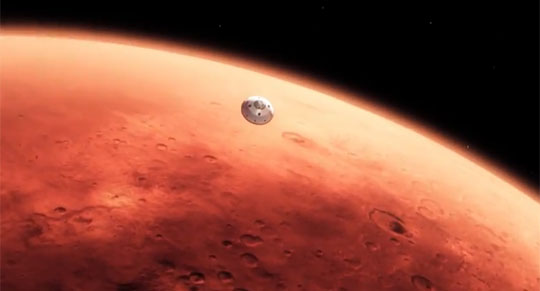
March 13, 2015 – A small moon that circles Saturn harbours a warm water ocean beneath its thick icy crust, according to research that makes the distant body a prime target in the search for life elsewhere.
The discovery means Enceladus, a 300 mile-wide moon of the ringed planet, is the only place beyond Earth that is known to be hydrothermally active, providing a natural heating system for the subsurface ocean.
Nasa’s Cassini probe has already mapped out a six-mile-deep saltwater ocean under the frozen south pole of Enceladus, but the latest measurements from the spacecraft go further in revealing the water to be warm, at least in places.
Hsiang-Wen Hsu at the University of Colorado in Boulder said that Enceladus appears to have a hot, porous core that heats the deepest water in the ocean to a temperature of at least 90C. On Earth there are similar hydrothermal vents on ocean floors that might have played a role in the emergence of life billions of years ago.
“A hydrothermal system like this could fulfill the basic criteria to have life: that is energy, nutrients and liquid water,” Hsu told the Guardian. “But we don’t know if the water was warm enough for long enough. If the temperature wasn’t stable, life may not have happened there.”
Life would struggle to gain a foothold on Enceladus if it had no internal heating system because the Saturnian moon is too distant to be warmed by the sun.
Hsu and his colleagues reached the conclusion that Enceladus has a warm ocean under 25 miles of icy crust after months of work to trace the origins of tiny particles of silicon dioxide that had been collected by Nasa’s Cassini probe.
Using the spacecraft’s Cosmic Dust Analyser, the scientists found that dust particles in one of Saturn’s rings came from plumes that erupt from Enceladus. Among them were silica nanoparticles that most probably formed in chemical reactions between the water and rocky core on the ocean floor.
via Disclose






